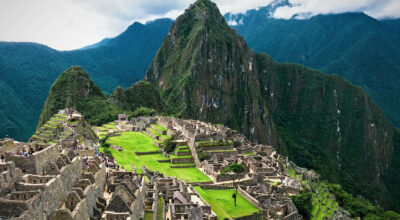Tribhuvan University : History About Establishment Of Tribhuvan University

Tribhuvan University
Tribhuvan University : Founded in 1959, the country’s oldest university, Tribhuvan University, has made the dreams of thousands of Nepalis come true. Tribhuvan University Kipu (Kirtipur) is spread over an area of 154.77 hectares. There is a central administrative office and a central campus of the university. But for the past 59 years, the university has been playing tricks on the local people.
The indigenous people of Kirtipur have always raised their voices about the dark history of the establishment of Tribhuvan University and the ill effects it has had on Kirtipur. But their voices have been suppressed by power and authority. When a large-scale project is implemented in the Nepa Valley (Kathmandu Valley), the indigenous people are often driven away by unjust bargaining, the use of institutional power, oppression of the weak and, most importantly, state power, which has had a negative impact on them.
Kirtipur is an ancient Newar settlement. Its real name is Kipu. The inhabitants of Kipu are called Kipumi. Kipumis still discuss what happened 59 years ago and how it has affected their lives today. The heart of the Newars is puzzled by how this ‘development’ has moved away from its place when it sees the huge buildings erected near the ancient city of Kipu. “Why can’t development cover us?” Why are they hurting us every time? ‘, Such questions are haunting the minds of the local people. In the last 59 years, Kirtipur has been facing division in unjust steps, conspiracies and use of force.
Kipu is surrounded by arable land, a major source of livelihood and economy for the locals. Mahendra Shah, the tenth generation descendant of the Gurkha invader Prithvinarayan Shah, had cast an evil eye on the land of Kipumi. ‘A commission was formed to establish the university. The great poet of Gorkhali language Laxmi Prasad Devkota was also a member of the commission, ‘said Dwarika Maharjan, a social worker of Kipu.
The people of Kipu say that they have seen revenge with Kipumi as they have defeated Gorkhali twice in Kipu by King Mahendra Shah, a devotee of his ancestor Prithvinarayan Shah. ‘There were other proposals for the university. The land elsewhere was not cultivable and fertile. But the king did not care about those places’, said Harisharan Maharjan. It is to be recalled that King Mahendra had started the administrative division of 75 districts and disintegrated the existing administrative unit.

While discussing a suitable place for the establishment of a university, it was finally decided to establish a university in Kipu. Immediately after the decision, land acquisition was started. At the time of the land acquisition, the government had promised to compensate the Kipumi people with Rs. The first line of the notice said, ‘Kipumi people will be employed in the construction of the building. The Kipumi people will build the university building. ‘The second announcement was,’ Kipumi will be given first priority when recruiting Tribhuvan University staff. ‘This announcement was very big. But that was not a consensus. The information was issued unilaterally by the government.
Divided Kipumi
As soon as the news of the land acquisition was spread, the Kipumis began to oppose it. The government then devised a ploy of ‘divide and rule’. On the one hand, the people of the government were preaching to the Kipumi people that Kipumi would be rich and prosperous after the establishment of the university. Kipumi preached multidimensional benefits. On the other hand, critics of the project’s results began to oppose it. The division between the Kipumi also created a kind of conflict.
One group said, “Even if the dictatorial government announces land acquisition, it will do whatever it takes to leave the land.” No one can stop it. So let’s demand justice for us. ‘That group was called’ Ya Sangh ‘(yes group). Another group said, ‘Our life is based on land. We cannot lose our permanent property. Even if they give us a tola of gold, we will not give them land. ‘This group was called the’ May Sangh ‘(no group). Such a division between Kipumi became beneficial for the state.
At that time, the voice of ‘May Sangh’ became louder and ‘Ya Sangh’ became weaker. The majority of the Kipumi people were against it. It was strongly suggested that the members of the ‘Y Sangh’ should be excluded from social behavior and social organizations, even from the Guthi.
Kipumi was deceived
The government initially announced the acquisition of 500 ropanis of land. This declaration gave the impression that there would not be so much damage if only 500 ropanis of land. But the government deceived Kipumi and acquired 3500 ropanis of land. The government is still saying that it will give land instead of land.
The land in Durupukhu and Suchatar was advertised to be given to Kipumi. An attractive promise was made to give three ropanis of land equal to one ropani of Kipu. In addition, one bigaha of land in Kipu is equivalent to three bigahas of land in Chitwan and forest land at the rate of one hundred rupees per bigaha.
Kipumi was taken to a place where his finger was touched. How can we live there? ‘The confusion at that time was even deeper. The conflict was so intense that people from one tol of Kipu could not go to another tol. A referendum was held on whether to give land to the university or not.
In the referendum, only one person voted in favor, the rest voted against. When the result of this referendum was presented to King Mahendra, the result was reversed. The commission said, “Only one person voted in opposition, all the others voted in favor of building a university.” It was a big conspiracy against Kipumi.
Activities against the construction of the university are intensifying. The government hatched another ploy. Influential leaders of the opposition were given letters of appointment at Tribhuvan University. But this did not end there. Unjust land acquisition continued for many years. The government acquired more than 6,000 ropanis of land.
Unfulfilled promises

Despite the protests, the state moved ahead with the construction work. But no Kipumi got land in Chitwan or anywhere else. The people who were able to get full compensation were given three hundred rupees equal to one ropani of land. Some people were given only a partial amount. Some people didn’t even have a penny. The Kipumi people were mistreated in this way.
Kipumi was not even given a job as announced by the government.
Protest and repression
As soon as the land acquisition started, the protests of the locals intensified. King Mahendra himself had reached Panga. When he reached Panga, the people there had blocked his way by sleeping on the road. The women came out of the house in black clothes to protest against the king. “I remember when I was young. My mother-in-law took me to Panga. He had said – Mahendra Ta Haku Percy Kyan Vanegu. (Going to Mahendra to perform Haku Patasi), ”recalled Harisharan Maharjan. Haku potash was hung on the windows of all the houses.
King Mahendra ordered to suppress the people’s protest. The main leader was arrested. Kipumi’s voice began to weaken. By mobilizing the police, the government started measuring the land. The oppression of the people was so severe that people were forced to move out of Kipu and enter Kipu because the road to Kipu had to pass through the university. This process was stopped only in 2030 BS.
Every year, Tribhuvan University is expanding its area. Acquiring 500 ropanis of land means that the government has acquired 6,500 ropanis of land. Attempts were made to occupy more land by enclosing the university campus wall. The local youth retaliated in various ways.
The youths started tearing down the walls. The government mobilized the police. But this time they did nothing. Trivi himself pushed back 12 feet to build the wall.
Ring Road
At the same time, a ring road was being constructed in the valley. The ring road from Kalanki to Ekantakuna was later improved. Kalanki was called Kalkhu Azima and Ekantakuna was the way to Gwakhuncho. Gwakhuncho is also called Ekantakuna. Earlier, it was proposed to bring the ring road from Kipu. But after fierce opposition, the route was diverted.
The language of the state and the language of the citizen

The official language used by the state is Gorkhali. In 1920, Gorkhali language was called Nepali language. At that time, most people in Kipu did not understand the language. They spoke their native language. The state took advantage of this. Citizens were deprived of education for generations. Before the Rana rule, the Newar community could read and write in their native language. But a language policy and anti-education policy made many generations of the Newar community uneducated and illiterate. The state took advantage of this during the land acquisition. One can only guess what kind of problem Kipumi had to face 59 years ago when the government officials spoke a language they did not understand. For the same reason, no written agreement was made with Kipumi.
The result
Depending on the farmer, Kipumi suffered a great loss in his life due to land acquisition for the university. Most people’s livelihood was taken away. All sources of income dried up. Many Kipumis had to go to Kathmandu and fight for employment. There are many stories and sub-stories of their financial difficulties. Most people lost their permanent property.
The money provided as compensation could do nothing. “The Kipumis went from landlords to beggars,” said Panchlal Maharjan of Kirtipur. In addition to these effects on personal life, Kipu’s culture was severely affected. During the land acquisition for the university, many guthi lands were also acquired. As a result, the guthis that run the culture closed down.
On top of that, King Mahendra established Guthi Sansthan. Through the same institute, all the independent guthis of the Newar community were brought under its control and the land in the name of the community was made available on private land. Guthis running on land income and production have all disappeared.
There was a forest called Goda Gu to light a lamp called Goda Mata. But today, when the Guthi connected with that Jatra was closed, the Jatra also stopped. Many cultures were destroyed after Guthi lands were transferred in the name of individuals. This is just one example.
The 3500 ropanis of land acquired in the name of Tribhuvan University is still not in use. Triville has been in a frenzy but has not been used for any work. Many ordinary people are still forced to pay taxes to work on their own land. Trivi is also raising taxes on land acquired without compensation. Pir Kipumi is worried that if he quits working on his land, Trivi will take over the same land.
So even though they are paying taxes to Trivi, they are still working on their own farm. Many people in Kipu today have neither land nor houses. The economic life of the people who have made agriculture their only occupation has been ruined. Before 59, service employment was not like today. Traditional work was the source of income. Anyone can guess what kind of economic deprivation they would have faced in such a situation. Trivi has no plan on how to use the unused land. However, he has not stopped collecting taxes from the landowners.
Protest activities have not stopped. Today’s young generation of Kipu is beginning to realize what they had to lose and continue to protest. However, the police force has been cracking down on them. The land snatched from Kipumi has been given to various banking companies today. Land acquired for educational purposes is being used for business today. As the protests unfold, Triville begins a game of splitting Kipumi.
“Money is current assets. That can be done in a few years. Land is a permanent property. We can keep the land for generations. Land is also power. By losing land, Kipumi has lost a lot of power to the economy, ”said a local engineer.
What did Kipumi gain by losing his land for the establishment of the university except repression, conspiracy and marginalization?
FAQ’S
What is the history of Tribhuvan University ?
Gehendra Shumsher : History About First Scientist Of Nepal






